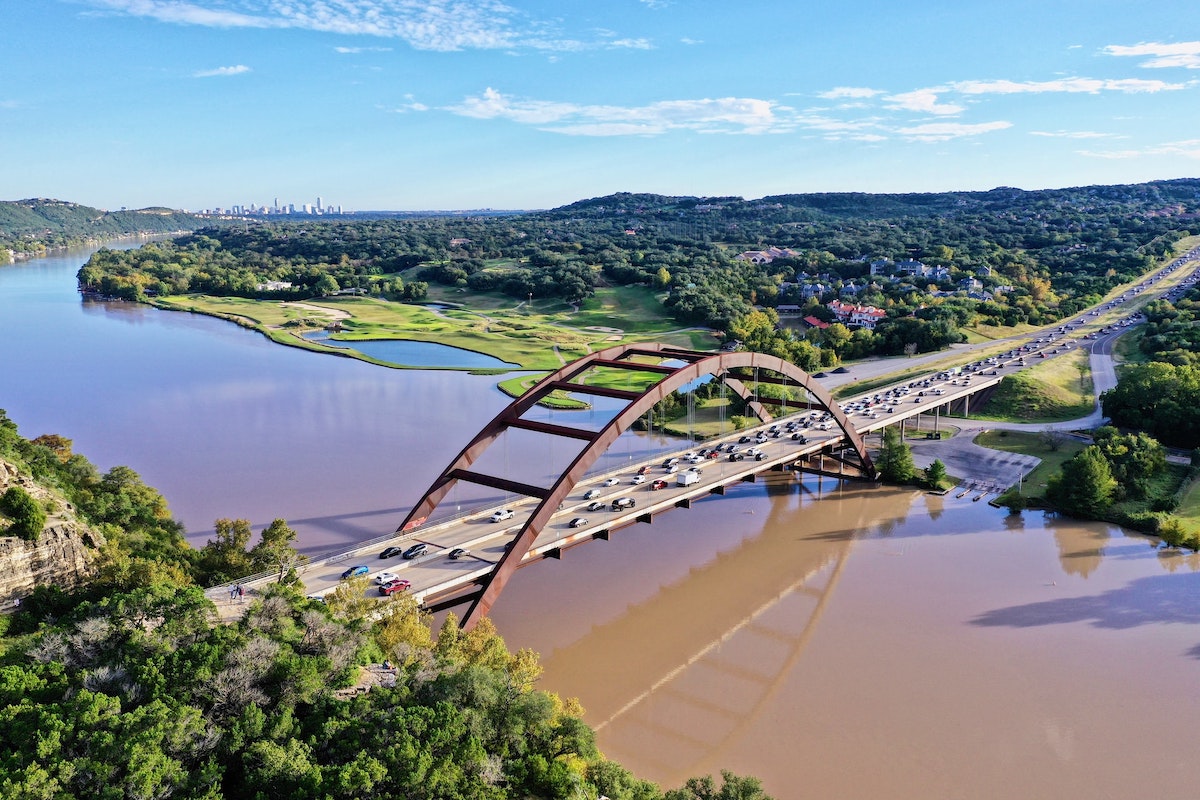The popularity of Austin appears to be going nowhere but up. The city has continued to grow over the last decade, with no signs of slowing down, and more people are flocking to Austin than ever before. It’s rated as America’s fastest-growing city, and there are a number of reasons why.
First of all, Austin’s economy is doing very well: low unemployment numbers and high job growth — the second-highest rate of job growth in the US, in fact. It also sports a low cost of living relative to wages, which makes it a major draw for young people. Another draw for young workers is the burgeoning tech industry — Austin is often called “The Silicon Valley of the South,” being the number one creator of new tech jobs in the United States. Add that to the city’s warm weather and mild winters, along with Austin’s unique culture of historical sites, museums, and music, and there are a lot of great reasons to move to Austin.
But with growth and popularity come certain drawbacks, most notably traffic. A recent study has shown traffic in Austin to be steadily worsening: Austin is the 14th most congested city in the nation, ranking behind places like Dallas, San Diego, and Portland. Commuters are spending an average of 66 hours a year stuck in traffic, which exacts a heavy toll in terms of lost productivity.
The study also shows traffic congestion isn’t limited to rush hour — many of the delays are happening in midday and overnight, times usually best for shipping vehicles and travelers.
On some level, this is inevitable — a booming economy, growing population, and overall popularity will naturally mean a rise in traffic congestion. But heavy traffic can have a number of negative consequences. There is the aforementioned lost productivity, which can add up to thousands or millions of dollars lost to spending hours in traffic. There’s the increased economic impact to the consumer, such as fuel costs (especially relevant right now), vehicle maintenance, and even car insurance — denser traffic means more accidents, which in turn leads to higher premiums. Last but not least, there’s the pollution, which can not only contribute to the worsening climate, but take a toll in terms of stress, health, and even life expectancy.
Possible Solutions
So what is there to be done? Fortunately, both the public and private sector are working on some solutions to alleviate Austin’s traffic problems.
For one, the City of Austin has devoted over $800 million to help improve Austin’s transportation infrastructure. This will help the city not only be safer, but will improve travel for bikers and pedestrians as well as cars.
CapMetro is also taking initiative to help improve Austin’s public transportation system. Several projects are currently underway, including:
- Connection 2025, a study begun in 2015 designed to pinpoint the areas where public transportation in Austin could be improved. The study provided a wealth of information CapMetro can use to deal with the most pressing problems and complaints regarding the city’s public transport. Some of the earliest actions taken included CapMetro eliminating the premium fare and increasing the frequency of MetroRapid. More improvements will take place well into 2023.
- Project Connect, which is aimed at improving the city’s transportation network ahead of new technologies and innovations, such as autonomous transit and a conversion into a fully electric system.
- Capital Express, a forthcoming system designed to help alleviate some of the common issues caused by Austin’s infamous IH-35, which has been known to slow to speeds of 20 mph during peak hours and costs commuters millions of hours of lost time. The route is heavily used for commercial traffic from surrounding states, compounding the problem. The initiative is still gathering input and conducting environmental studies.
There are other proposed solutions to Austin’s traffic issues that might be considered in the future, such as:
- Staggering the times at which people go to work. If some of the most major companies in Austin changed their operating hours by an hour or more, the traffic on the streets at one time could be cut down dramatically.
- Electronic Road Pricing, a system by which toll roads are dynamically priced according to time of day and traffic flow.
- The adoption of a ski-lift cable-car type system, such as seen in other parts of the world. Such a system could potentially cost less than a railway solution, and could get passengers over rivers and other major obstacles the way a ground-based system might not.
Solving the traffic problems of a growing and popular city like Austin is never going to be easy. It will require dedication, ongoing innovation, and (inevitably) a great deal of money. But there are more innovations and changes happening in transportation now than ever before, and working solutions may be just on the horizon.
Photo by Mitchell Kmetz on Unsplash


